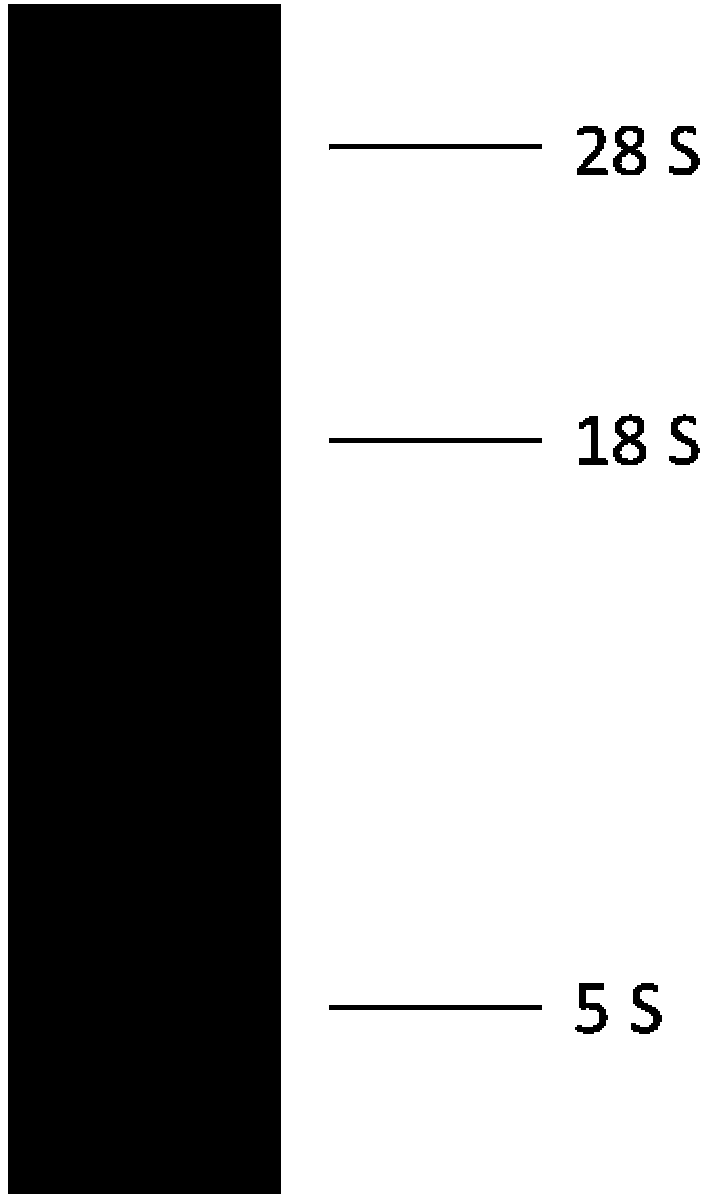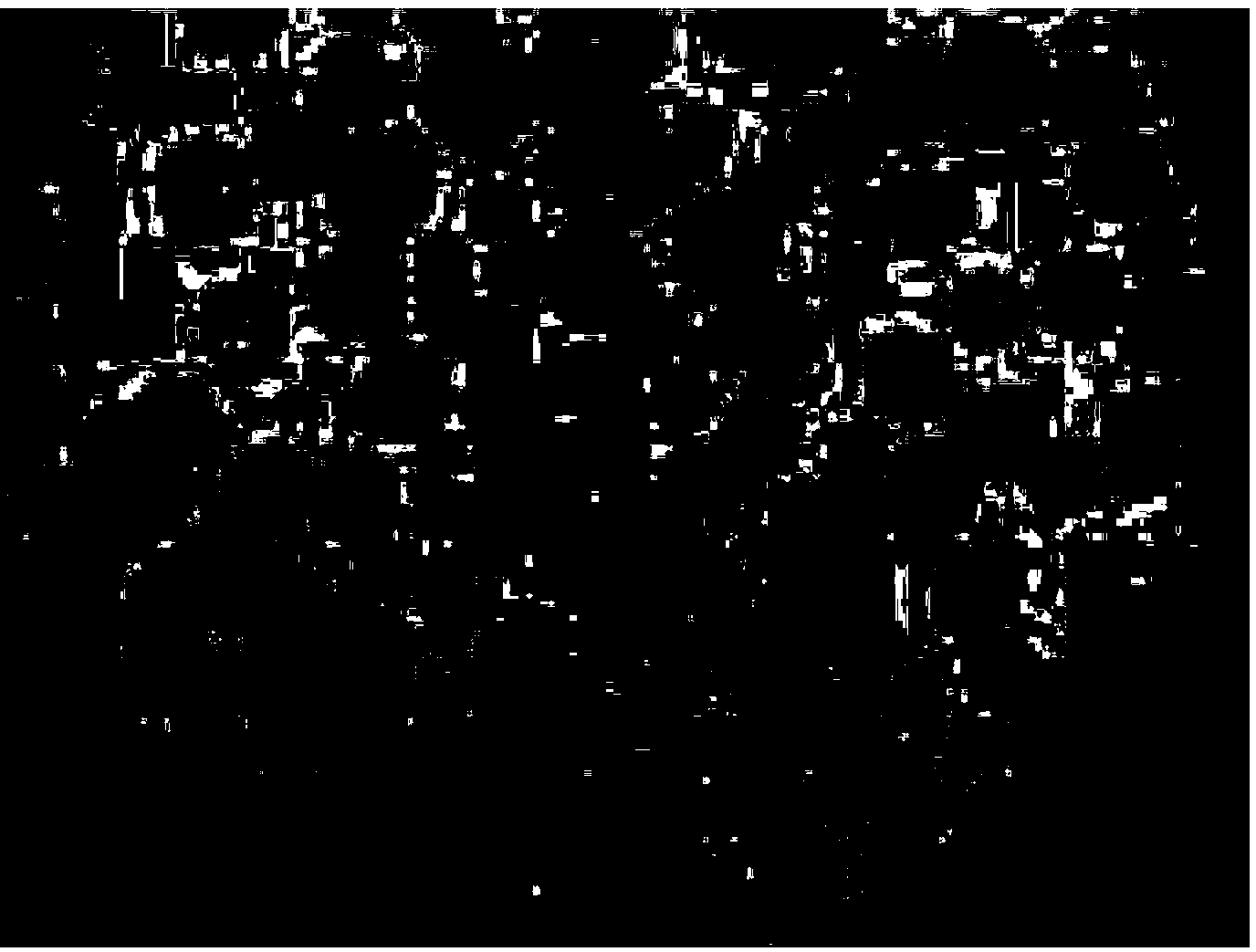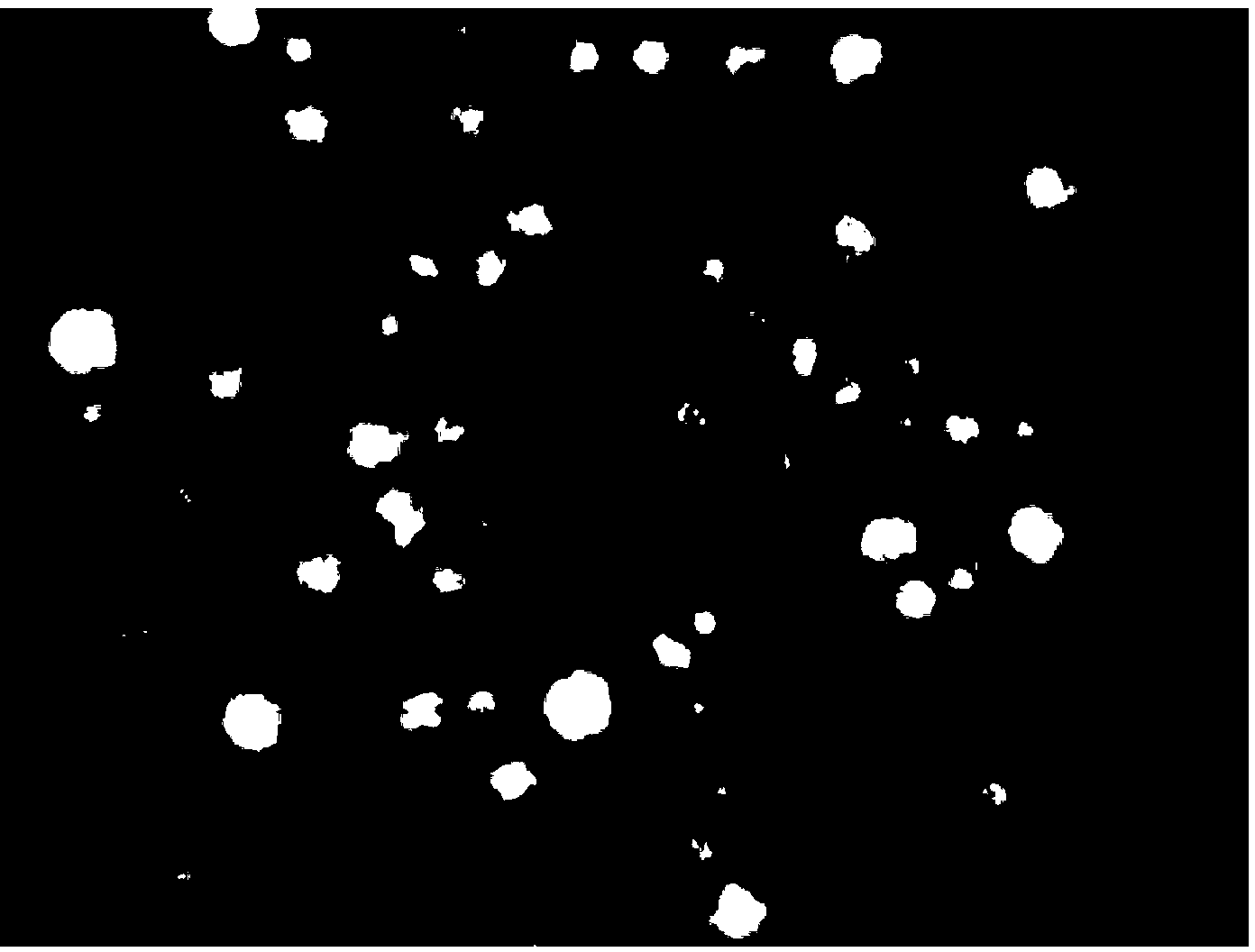Method for transforming plant protoplast by RNA (Ribonucleic Acid) virus
An RNA virus and protoplast technology is applied in the field of RNA virus transformation of plant protoplasts, which can solve the problems of restricting the popularization of BNYVV transfection protoplast method and high requirements for instruments.
- Summary
- Abstract
- Description
- Claims
- Application Information
AI Technical Summary
Problems solved by technology
Method used
Image
Examples
Embodiment 1
[0043] Embodiment 1, the extraction of the total RNA of the host leaf plant tissue of virus infection
[0044] In this example, Tetragonia expansa was used as the plant to be infected, and it was infected with a polymorphic RNA virus Beet necrotic yellow vein virus (BNYVV), and the total RNA of the infected Tetragonia leaf tissue was extracted , ready for the transformation of protoplasts. details as follows:
[0045] (1) Juice mechanical friction inoculation of host apricot BNYVV: Sprinkle a small amount of carborundum evenly on the leaves of the apricot infected with BNYVV, take the diseased leaves or separate the diseased spots, grind them thoroughly with 0.05M PB buffer, and wear clean hands Latex gloves are dipped in a small amount of disease juice and rubbed to smear the whole leaf. After 5-7 days, yellow circular lesions can be seen on the leaves.
[0046] (2) Collect diseased apricot leaves (the average number of spots per diseased leaf is 60-90), add about 8-10g of ...
Embodiment 2
[0050] Embodiment 2, the preparation of Ben Sheng tobacco protoplast
[0051] In this example, protoplasts for transformation were prepared from Nicotiana benthamiana. details as follows:
[0052] (1) Select the first and second full-length leaves of Tobacco benthamiana at the 6-8 leaf stage cultivated in the greenhouse (24°C, 12h light, 12h dark) for protoplast preparation, and chop them as much as possible (leaf Area less than or equal to 0.5mm 2 ), quickly put the chopped leaves into the enzymatic hydrolysis solution (recipe above). The ratio of leaves to enzymatic hydrolysis solution is 3g of leaves (equivalent to about 20 complete leaves) and 5ml of enzymatic hydrolysis solution.
[0053] (2) Stand for enzymolysis in a dark place at 24°C for 3-4 hours, observe under a microscope that most of the cells are spherical to stop the enzymolysis, centrifuge at 80rpm for 1min, and release the enzymolyzed cells.
[0054] (3) Use a 200-mesh nylon filter to filter the enzymatic ...
Embodiment 3
[0060] Embodiment 3, PEG-mediated tobacco protoplast transformation
[0061] In this example, the plant total RNA extracted from the diseased leaves of Apricot apricot infected with BNYVV obtained in Example 1 will be transformed into the protoplasts of Nicotiana benthamiana prepared in Example 2 through a PEG-mediated method, with the aim of constructing BNYVV The recombinant N. benthamiana protoplasts were used to study the pathogenic mechanism between BNYVV and N. benthamiana host. details as follows:
[0062] (1) Add the appropriate amount of total plant RNA extracted from the diseased leaves of Apricot apricot infected by BNYVV obtained in Example 1 to a 2ml centrifuge tube (treated with DEPC), and add 200 μl of the protoplasts of Nicotiana benthamiana prepared in Example 2 solution (concentration of 1 × 10 6 pcs / ml), make the protoplasts and plant total RNA fully mixed, then add 220μl PEG4000 solution (recipe above), mix well (the action must be gentle), and place at r...
PUM
 Login to View More
Login to View More Abstract
Description
Claims
Application Information
 Login to View More
Login to View More - R&D
- Intellectual Property
- Life Sciences
- Materials
- Tech Scout
- Unparalleled Data Quality
- Higher Quality Content
- 60% Fewer Hallucinations
Browse by: Latest US Patents, China's latest patents, Technical Efficacy Thesaurus, Application Domain, Technology Topic, Popular Technical Reports.
© 2025 PatSnap. All rights reserved.Legal|Privacy policy|Modern Slavery Act Transparency Statement|Sitemap|About US| Contact US: help@patsnap.com



